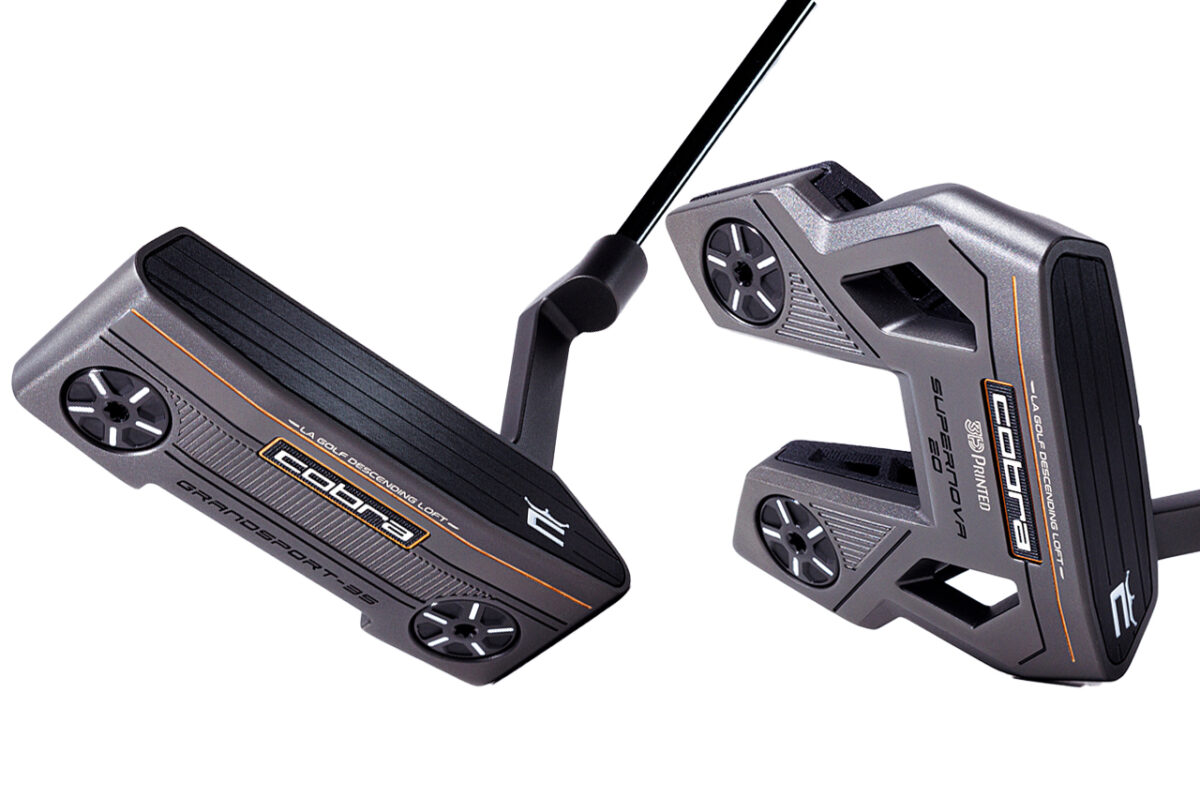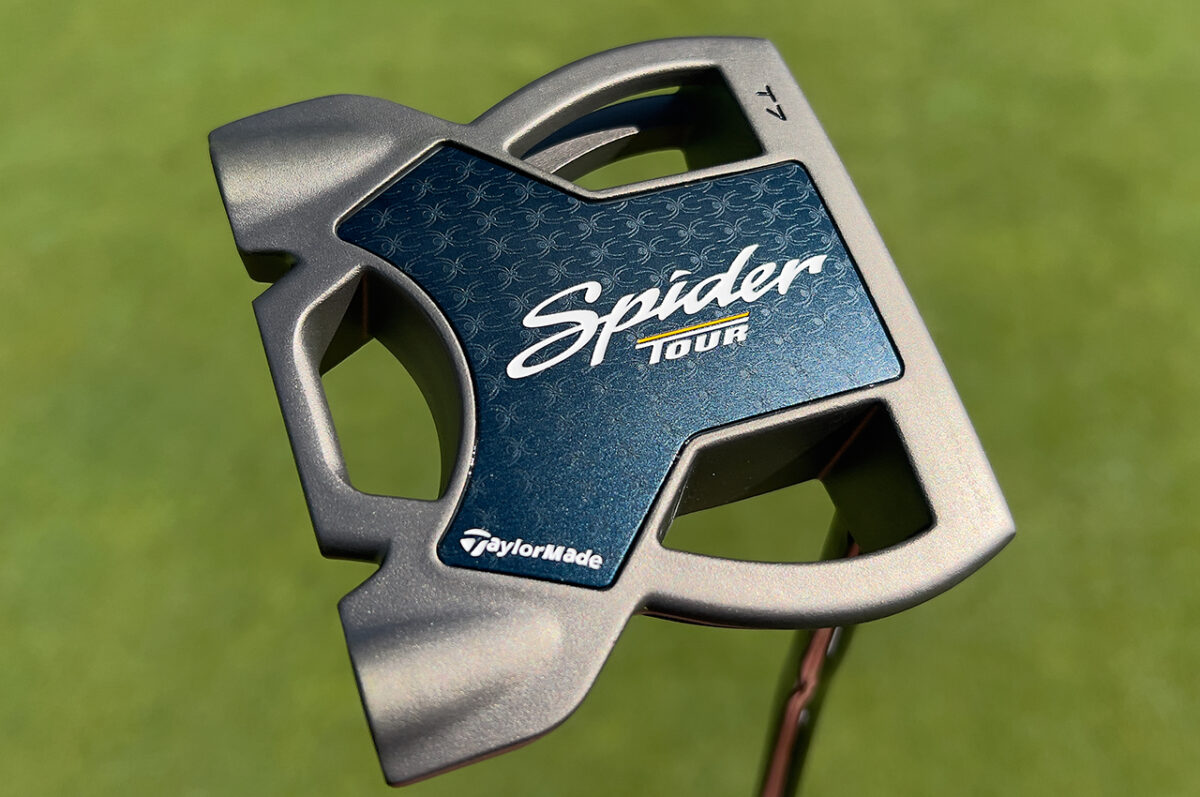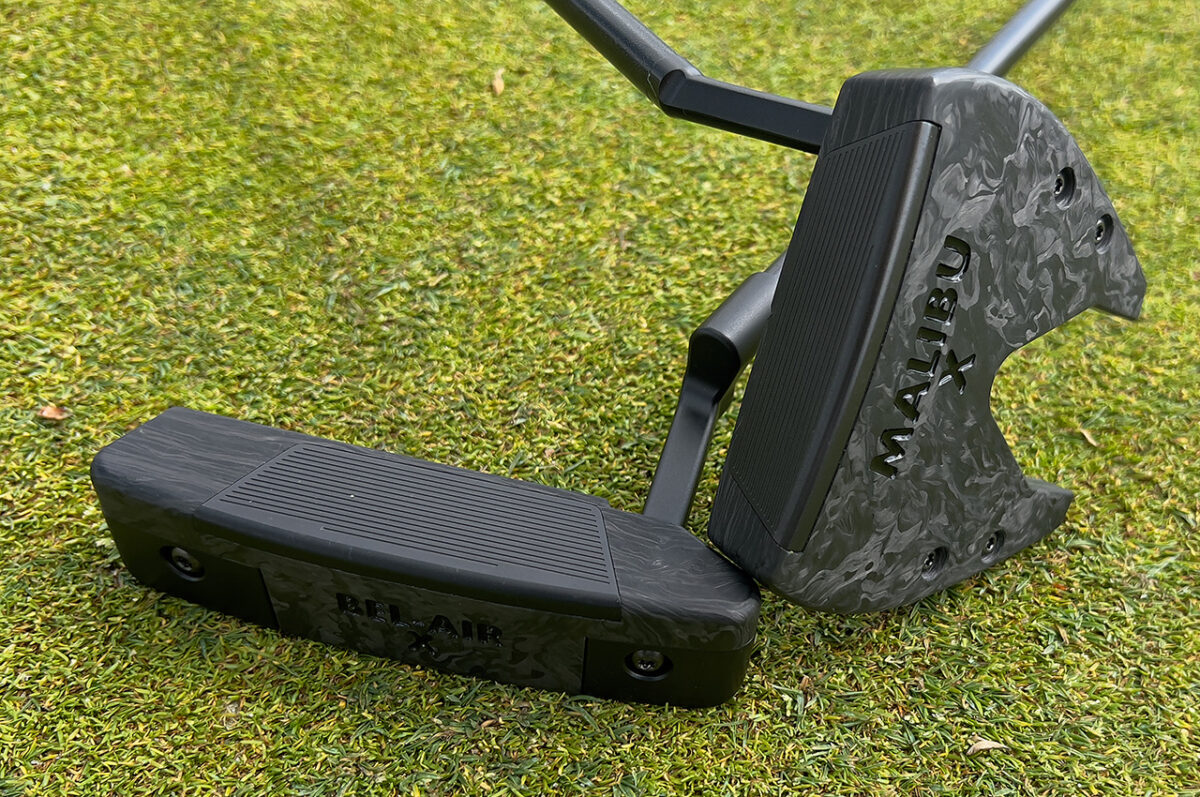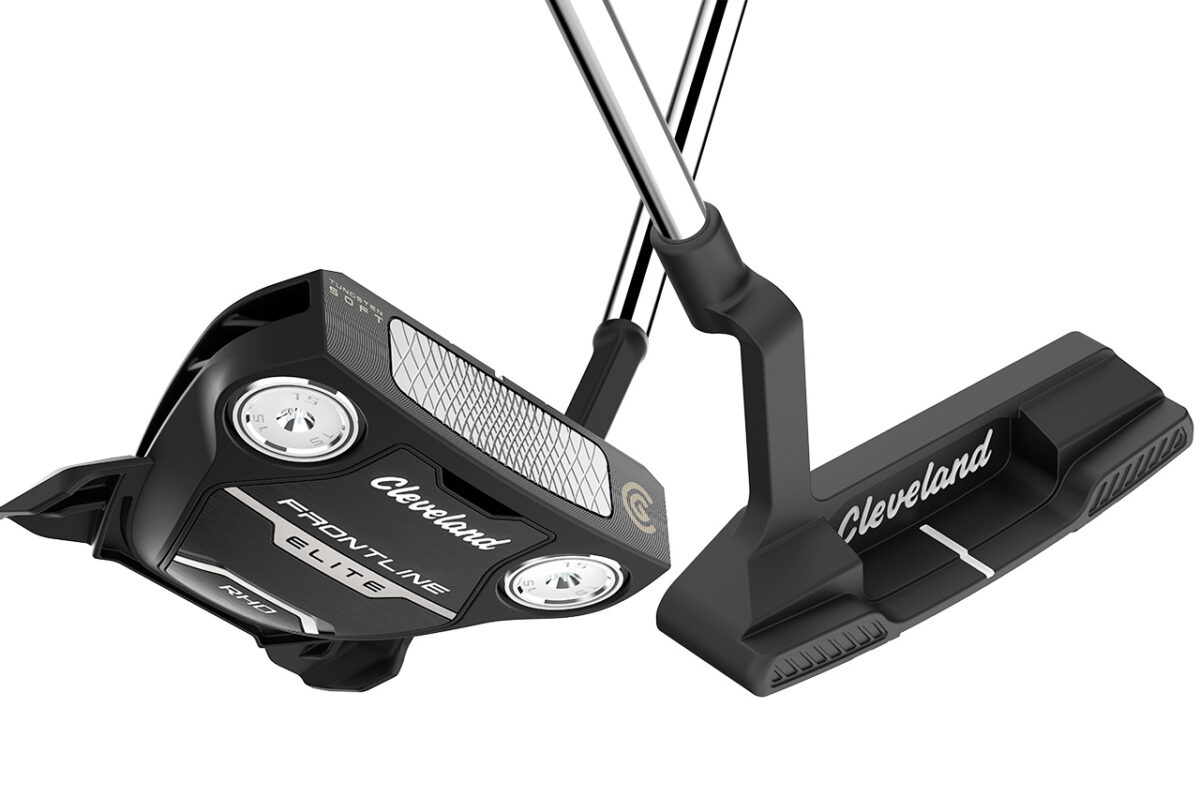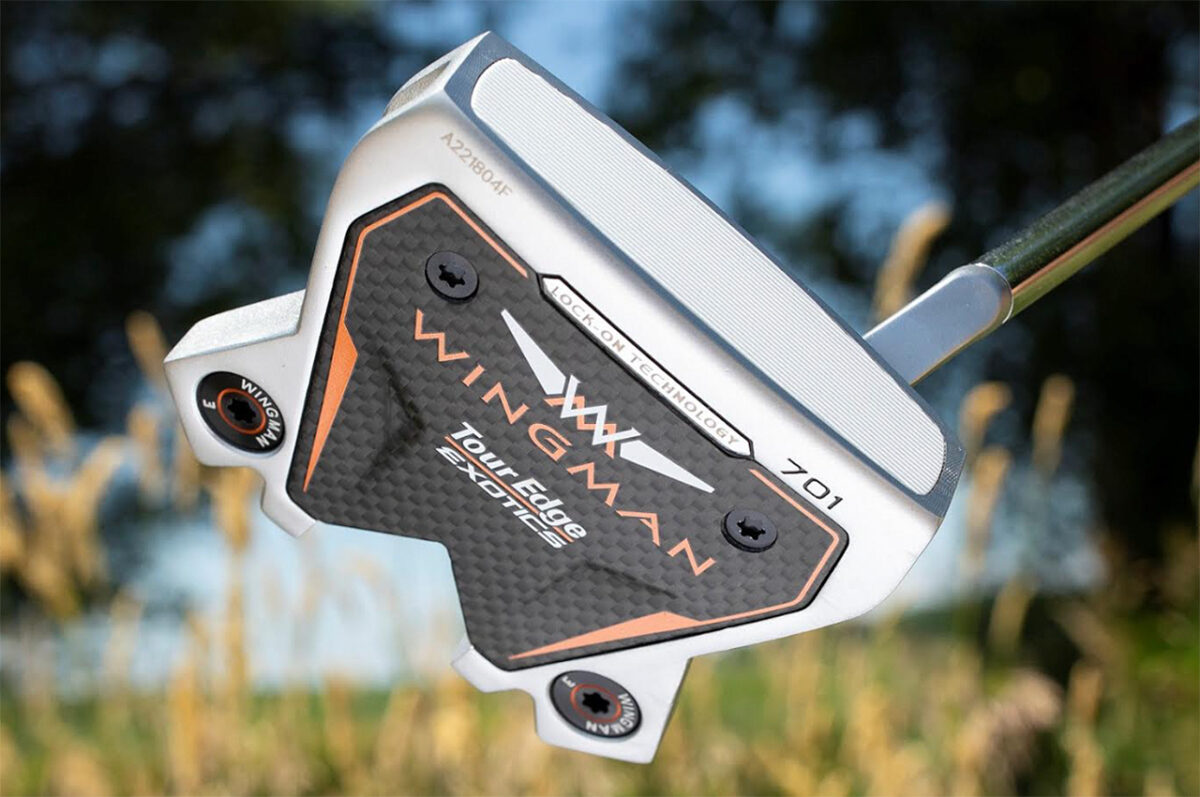Gear: Cobra 3D Printed putters (2024)
Price: $349 each with KBS CT Tour 120 shaft and SuperStroke Zenergy Pistol 1.0 grip
Specs: Carbon fiber crown with 304 stainless steel body, milled 6061 aerospace grade aluminum face insert and 3D-printed features.
Available: February 23, but NOW via pre-sale
[anyclip-media thumbnail=”https://cdn5.anyclip.com/DXTFx40BPzRpr9ZOQbc6/1708453887157_248x140_thumbnail.jpg” playlistId=”undefined” content=”PHNjcmlwdCBzcmM9Imh0dHBzOi8vcGxheWVyLnBvcHRvay5jb20vYW55Y2xpcC13aWRnZXQvbHJlLXdpZGdldC9wcm9kL3YxL3NyYy9scmUuanMiIGRhdGEtYXI9IjE2OjkiIGRhdGEtcGxpZD0iaXJtZmlydHlncXllZXVkMmtqeWhlb2syajVpd2V5enciIHB1Ym5hbWU9IjE5OTgiIHdpZGdldG5hbWU9IjAwMTZNMDAwMDJVMEIxa1FBRl9NODMyNyI+Cjwvc2NyaXB0Pgo8c2NyaXB0IHR5cGU9ImFwcGxpY2F0aW9uL2xkK2pzb24iIG5hbWU9ImFjLWxyZS1zY2hlbWEiPgogewogICJAY29udGV4dCI6Imh0dHBzOi8vc2NoZW1hLm9yZyIsCiAgIkB0eXBlIjoiVmlkZW9PYmplY3QiLAogICJuYW1lIjoiQ29icmEgM0QgUHJpbnRlZCBwdXR0ZXJzICgyMDI0KSIsCiAgImRlc2NyaXB0aW9uIjoiQ29icmEgR29sZiBoYXMgaW50cm9kdWNlZCB0d28gbmV3IHB1dHRlciBmYW1pbGllcyBmb3IgMjAyNDogM0QgcHJpbnRlZCBhbmQgdmludGFnZS4gVGhlIDNEIHByaW50ZWQgcHV0dGVycyBoYXZlIGEgbnlsb24gY2FydHJpZGdlIHRoYXQgc2F2ZXMgd2VpZ2h0IGFuZCBwcm92aS4uLiIsCiAgImR1cmF0aW9uIjoiUFQyTTQ5LjcwN1MiLAogICJ0aHVtYm5haWxVcmwiOiJodHRwczovL2NkbjUuYW55Y2xpcC5jb20vRFhURng0MEJQelJwcjlaT1FiYzYvMTcwODQ1Mzg4NzUyNV80ODB4MjcwX3RodW1ibmFpbC5qcGciLAogICJ1cGxvYWREYXRlIjoiMjAyNC0wMi0yMFQxODoyNjo0OS43ODZaIiwKICAiaW50ZXJhY3Rpb25TdGF0aXN0aWMiOnsKICAgIkB0eXBlIjogIkludGVyYWN0aW9uQ291bnRlciIsCiAgICJpbnRlcmFjdGlvblR5cGUiOiB7ICJAdHlwZSI6ICJodHRwOi8vc2NoZW1hLm9yZy9XYXRjaEFjdGlvbiIgfSwKICAgInVzZXJJbnRlcmFjdGlvbkNvdW50IjogMAogIH0KIH0KIDwvc2NyaXB0Pg==”][/anyclip-media]
Who it’s For: Golfers who want extra stability and modern design with enhanced alignment features.
The Skinny: By 3D printing a significant portion of the body, Cobra designers can radically shift weight to enhance performance while the variable-loft face encourages a more consistent roll.
The Deep Dive: When you make a new golf club, whether it’s a driver, a wedge or even a putter, one of the biggest challenges is to manipulate weight and remove it from places where it doesn’t do anything to areas when it can improve performance. As much as any brand in the industry, Cobra has aggressively used exotic materials, not just because they are cool, but because things like carbon fiber, tungsten and other things aside from stainless steel can make clubs perform better.
In 2021, Cobra released its first 3D Printed putters, taking the concept of exotic materials to a whole new level. Now, Cobra is releasing an updated family of 3D Printed putters.
Like the first generation of 3D Printed putters, the new offerings are aggressively shaped and made to be ultra-stable on mis-hits to keep putts you hit outside the sweet spot rolling on your intended line.
[afflinkbutton text=”Shop Cobra 3D printed putters” link=”https://worldwidegolfshops.pxf.io/75rDzQ”]
At first glance, you will see a carbon fiber crown and a four-level face that is made from 6061 aircraft-grade aluminum, an exceptionally light material. Made in partnership with L.A. Golf, the top portion of the hitting area has 4 degrees of loft, but each section drops in loft by 1 degree as the hitting area lowers, leaving the bottom with just 1 degree of loft. The idea is to create a consistent amount of loft on every putt, so if your hands are forward on one stroke, which would naturally de-loft the face, the 4 degrees of loft on the top can help to counteract it. If you swing up into a putt, which would add loft, the lower-lofted bottom of the face accommodates that type of stroke.
That’s what you see, but looking closer at the body of the 3D Printed putters reveals what makes them unique. Each head has a dark nylon area in the center that is made using 3D-printed nylon that is shaped into a lattice. This technique allows designers to make shapes and structures that could not be produced by forging or milling, while saving weight. The nylon also absorbs vibrations to improve sound and feel.
The rest of the body of the 3D Printed putters is made using metal-injection molded (MIM) 304 stainless steel.
The result of opting for all these high-tech materials is Cobra removed weight from the top, middle and face of the 3D Printed putters and shifted more of it to the back in the heel and toe areas, which boosts the moment of inertia (MOI) and helps the putters resist twisting on off-center strikes.
On the bottom of each club are weight ports that can hold weight screws ranging from 5 grams up to 25 grams. Custom fitters will be able to use these weights to adjust the swing weight of each putter based on the length that is ideal for specific players.
The 3D Printed putters are available in three different head styles, including the high-MOI Agera, the smaller Agera RS, the fang-style SuperNova and the blade-style GrandSport 35.
[afflinkbutton text=”Shop Cobra 3D printed putters” link=”https://worldwidegolfshops.pxf.io/75rDzQ”]
[lawrence-auto-related count=3 category=1364]
